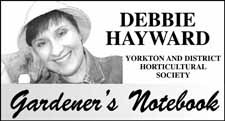Happy holidays, gardeners! I hope you had a wonderful Christmas, full of special times with family and friends. I love this time in-between Christmas and New Year's: it seems like the perfect time to relax, take a breath, and unwind after the whirlwind leading up to December 25. My ideal afternoon would be a hot mug of tea, a cozy corner on the couch (with Keith in the other corner and Toby snoring softly in-between us) and a pile of gardening magazines that I haven't had time to read all summer, until now.
Have you ever seen the magazine "Canadian House and Home"? I was rummaging through my pile of "to read" magazines and one issue that caught my eye was Canadian House and Home from May 2010. There's a very interesting article called "What Makes a Garden Work", and the man being interviewed is Ron Rule, a landscape architect in Vancouver. At that time, Ron was director of the UBC certificate program in garden design, had over thirty years' experience, and had designed over 2000 gardens.
He spoke about his own garden, and he had some unique perspectives that I think you and I could work into our own gardens. When asked what essential elements a garden should have, he said that there should be a "visual connection to the house's style", by using similar stone or brick from the house in the garden.
He also said that we should establish a "sense of discovery", and that everything shouldn't be visible from the house. My sweet parents were aware of this sense of surprise in the garden: they planted winding lawn paths in the first part of the garden, and there was something new to see down each path. All these things were not visible if you stood at the entrance to the garden: you had to go exploring. .
Ron also had other suggestions, such as a change in elevation, if possible; somehow incorporating water, even in a small garden, even if it is just a small birdbath; and creating a sense of flow from one area to the other, by using the same elements all through the yard, such as crushed gravel pathways or stones. He said he doesn't want to "be a slave to the garden", and so chooses easy care plantings of ornamental grasses and shrubs.
He had some definite ideas that you may or may not agree with: he does not like shrubs with red foliage, because he says they are not calming in the garden. "Chaotic" was the word he used. He also does not like fences because they show so definitely where the property line is, thus making your yard appear smaller. While he understands the necessity of fencing, he suggests that it should be disguised with plantings of trees and shrubs to "blur" the lines.
When asked "how important is colour?" he said that it is "overrated", stating that he prefers texture and subtle shades of green. His thinking is that flowers don't last, but shades of green will easily transition from spring through summer and into fall. This is something to keep in mind if you're a gardener who might not want or be able to plant a carpet of annuals in your flower beds.
I think we can all agree with Ron when he says that having a garden is important because it "provides an essential sense of calm". Very true!
Hope you can use this mid-winter time to catch up on some much-needed "R & R" (reading and relaxing!). Have a Happy New Year!




